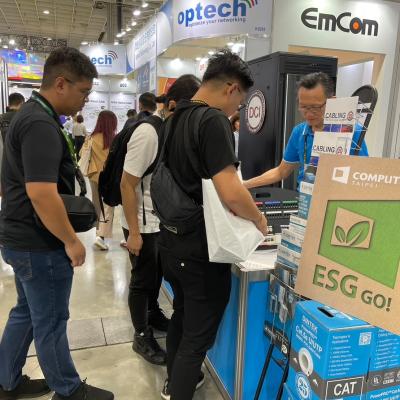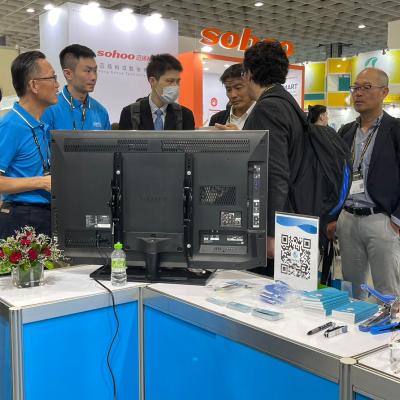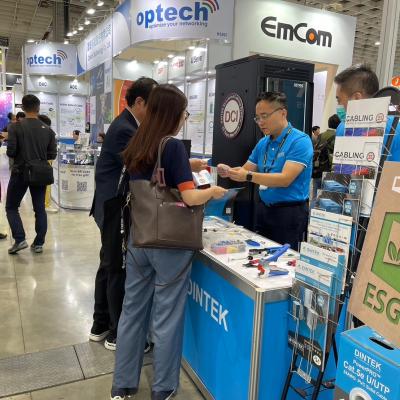DINTEK's
Best Practice for
LSZH Cable
Installation

ADVANCEMENT IN CABLE TECHNOLOGY

Gentle Handling
Proper Stripping
Bend Radius
Careful Pulling Techniques
What's it made of and why is LSZH so different to PVC jackets?
DINTEK LSZH cables are made from thermoplastic compounds that do not contain halogens. These compounds include materials like polyolefins (such as polyethylene or polypropylene) and various polymers.
LSZH materials are engineered for fire safety. They are formulated to emit very low smoke and non-toxic halogen gases when exposed to fire. PVC cables are made from a thermoplastic polymer called polyvinyl chloride. PVC is known for its flexibility and cost effectiveness. However, while PVC is a versatile material it lacks the fire safety features of LSZH. When PVC burns, it emits dense black smoke and toxic, acidic gases which can cause fatalities.
Many countries now insist that all internal cabling be LSZH jacketed.

The manufacturing process for LSZH cables focuses on achieving specific fire safety ratings while maintaining flexibility. This process can result in thinner and softer jackets compared to PVC.
PVC is naturally flexible, making it easier to handle and install. However, it is thicker and stiffer than LSZH materials. PVC cables might have a thicker jacket to provide additional protection and insulation, especially in harsh environments.
The thickness and flexibility of LSZH jackets are designed to comply with specific safety standards, ensuring minimal smoke and toxic gas emissions during a fire. Meeting these standards often involves optimizing the material composition and manufacturing process for thinner and softer jackets
Are there physical differences?
How to install LSZH jacketed cables
Handling & Storage: Handle LSZH
cables with care. While they are flexible,
they may be less rugged than PVC cables,
so avoid excessive bending or twisting.
Store LSZH cables in a dry, cool environment
away from direct sunlight.
Bend Radius: While LSZH cables are
flexible, they have specific bending radius
recommendations to prevent kinking and
damage to the cable. Avoid tight bends
and use velcro ties if possible. If using
plastic cable ties, use wide ties, and keep
them loose so they do not crush the
jacket.
Pulling Tension: All twisted pair cables
should not be pulled with tension above
110N/mtr. While PVC can be more forgiving
excessive pulling around corners etc,
can cause damage to LSZH cable jackets.
Remember, if you have pulled a cable with
so much tension that it tears a jacket,
then you will have damaged the internal
structure of the cable... whether it is LSZH
or PVC jacket.
DINTEK offers a wide range of LSZH cable across Cat.5e, Cat.6, Cat.6A and Cat.7. For more details, visit our product page here.








